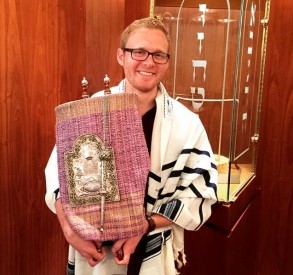
I’m one of those people whose emotions always are written all over my face.
For example, when a good friend referred to as “tchalla” – pronouncing the “ch” sound not as it’s done in Hebrew, but as it’s done in Spanish – I’m sure he saw me wince (and he may have heard a groan, too). He quickly apologized for something he otherwise wouldn’t have given a second thought.
Although I had not yet completed my formal conversion to Judaism (and the error was completely innocent), the mispronunciation still sent a shiver down my spine. My friend had heard of challah, but apparently had never heard the word pronounced correctly. It wasn’t his fault, but to me, it was a shock nonetheless.
Why did this innocent error affect me so visibly in the moment?
Challah is one of the ways I “do” Judaism in a tangible way. For all intents and purposes, challah is a ritual object. Aside from Passover, there isn’t a time during the year when you won’t see challah on the Shabbat table. It’s so important that there are even vegan and gluten-free versions to ensure everyone can partake.
As a Jewish symbol, challah is almost as universally acknowledged as a , a seder plate, or a . I eagerly embraced each of these symbols to identify myself and my home as clearly Jewish. For many people, though, making their own challah would not be a desirable undertaking.
As my Jewish identity and personal practice continue to grow and change, my focus is always on the of what I’m doing. Why do I want to go to daily minyan? Why do I want to wrap (phylacteries)? Why do I want to host a Passover seder? Why do I want to bake challah?
I started baking my own challah for a variety of reasons. First and foremost, I wanted a more personal way to engage with my Jewish practice than simply going to services after work on Friday evening, or hanging a at the entrance to my apartment. Although these are wonderful ways to engage, and ones in which I take great pride, there’s an element of getting your hands dirty – literally – that elevates the spiritual connection to the ritual practice.
The first time I brought a loaf of homemade challah to the Judaism class at the synagogue where I studied in New York City, one of the other students said, “This is a .” That statement stuck with me. Though it should have been apparent that baking challah is a mitzvah, I just thought it was something we do because of tradition.
Now, I make all different types of challah from a variety of recipes: one with more flour, one with less, one that calls for whole wheat flour, another with vanilla and Nutella, and an apple-cinnamon challah just for the High Holidays. Baking challah is my attempt at hidur mitzvah (beautifying the fulfillment of the commandment). Personalizing mitzvot is a way all of us can approach and enrich our connections to Judaism. Discover what’s important to you, define why that’s so, and how you can do that thing in a way that adds meaning to your Jewish practice.
And if your mitzvah results in a sweet treat that everyone can enjoy, then you really know you’re doing good work!

